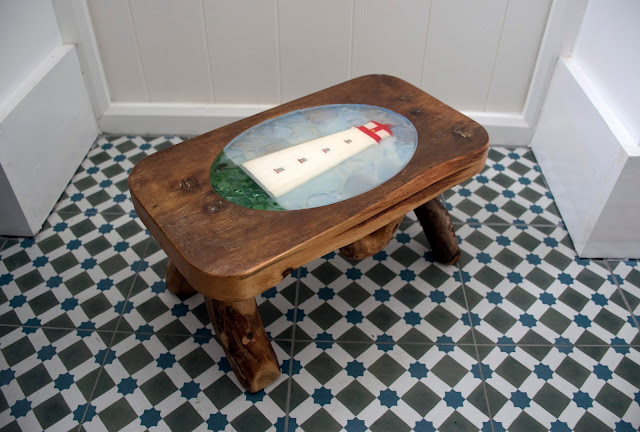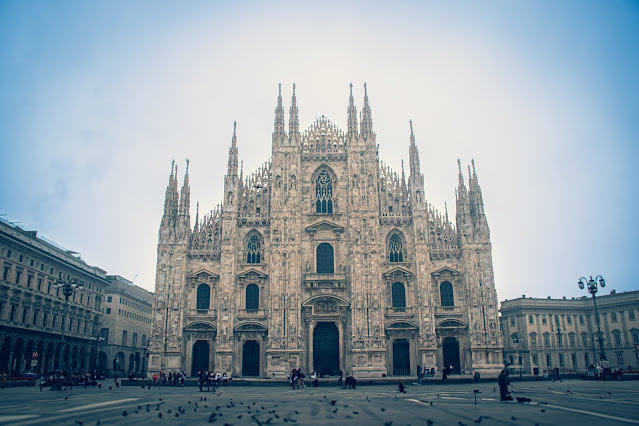Above the clouds
Versuvius and Herculaneum
From our excellently located base in Sorrento we embarked on the first of several day excursions and caught the train to Erculano. The train was busy despite the early hour, but a bargain at 2.50 Euros each way. The journey took around 45 mins, then at Erculano we hopped straight onto a waiting tourist bus that would take us to the volcanic crater of Versuvius.
For half an hour the bus wound it's way upwards, leaving behind the city. It was a surprise to find suburbia only faded away as we got very close to the volcano.
It's a daunting, sleeping monster to be living in the shadow of, but is that part of life in the Bay of Naples? It may explain the Neapolitan's obsession with death....Maybe that obsession actually started here many years ago?
Hoping the volcano would stay dormant for a least a few hours, we dis-embarked at a 'base camp' where you can buy a multitude of Vesuvius souvenirs and snacks, then headed off on the steep and dusty thirty minute walk to the rim of the volcano's crater.
It was quite astonishing that you could then walk round a good section of the crater, which was pretty terrifying in places. My fear of heights meant I only just made it round the last section.
But I did,and was rewarded with stunning views from above the clouds.
And it certainly looks the part. This is an archetypal volcano that I grew up with as depicted in children's books, a huge cavernous crater scared by a force of nature beyond our comprehension. It's pretty much devoid of any life with pockets of steam steam rising from fissures in the rocks, and it makes for an eerie setting.
It is a must see if you are visiting the Bay of Naples.
So having seen the big volcano close up in all it's infamous glory, it was onto our second stop of the day, and to see the impact this erupting volcano had on the Romans and their cities 2,000 years ago.
The archaeological site of Herculaneum is a short walk from the center of Erculano and as you approach you can envisage how this vanished city was dug out of a hole in the ground.
Herculaneum had literally risen from it's volcanic grave and been brought back into the world.
Herculaneum is smaller than Pompeii and as such it's easier to comprehend how this once popular seaside town was smothered in volcanic ash and hidden from the world for a few thousand years.
It's also a quieter, more serene experience than Pompeii and makes for a great day when you tie it in with a visit to Vesuvius.
The site can be walked around in an hour, and depicts an incredibly detailed picture of Roman life. The fresco's are still visible on the wall and some floor tiles are in wonderful condition.
It's also easy to forget that this was once a coastal town. A lasting, poignant image are the remains of the poor folk trapped in the boat houses that were once by the sea, waiting for the rescue boats and an escape from the volcano that never came.
From our excellently located base in Sorrento we embarked on the first of several day excursions and caught the train to Erculano. The train was busy despite the early hour, but a bargain at 2.50 Euros each way. The journey took around 45 mins, then at Erculano we hopped straight onto a waiting tourist bus that would take us to the volcanic crater of Versuvius.
 |
| Versuvius, Italy |
For half an hour the bus wound it's way upwards, leaving behind the city. It was a surprise to find suburbia only faded away as we got very close to the volcano.
It's a daunting, sleeping monster to be living in the shadow of, but is that part of life in the Bay of Naples? It may explain the Neapolitan's obsession with death....Maybe that obsession actually started here many years ago?
 |
| Versuvius, Italy |
Hoping the volcano would stay dormant for a least a few hours, we dis-embarked at a 'base camp' where you can buy a multitude of Vesuvius souvenirs and snacks, then headed off on the steep and dusty thirty minute walk to the rim of the volcano's crater.
 |
| Souvenirs, Versuvius, Italy |
It was quite astonishing that you could then walk round a good section of the crater, which was pretty terrifying in places. My fear of heights meant I only just made it round the last section.
But I did,and was rewarded with stunning views from above the clouds.
And it certainly looks the part. This is an archetypal volcano that I grew up with as depicted in children's books, a huge cavernous crater scared by a force of nature beyond our comprehension. It's pretty much devoid of any life with pockets of steam steam rising from fissures in the rocks, and it makes for an eerie setting.
It is a must see if you are visiting the Bay of Naples.
So having seen the big volcano close up in all it's infamous glory, it was onto our second stop of the day, and to see the impact this erupting volcano had on the Romans and their cities 2,000 years ago.
The archaeological site of Herculaneum is a short walk from the center of Erculano and as you approach you can envisage how this vanished city was dug out of a hole in the ground.
Herculaneum had literally risen from it's volcanic grave and been brought back into the world.
 |
| Herculaneum, Italy |
 |
| Herculaneum, Italy |
Herculaneum is smaller than Pompeii and as such it's easier to comprehend how this once popular seaside town was smothered in volcanic ash and hidden from the world for a few thousand years.
It's also a quieter, more serene experience than Pompeii and makes for a great day when you tie it in with a visit to Vesuvius.
The site can be walked around in an hour, and depicts an incredibly detailed picture of Roman life. The fresco's are still visible on the wall and some floor tiles are in wonderful condition.
 |
| Herculaneum, Italy |
It's also easy to forget that this was once a coastal town. A lasting, poignant image are the remains of the poor folk trapped in the boat houses that were once by the sea, waiting for the rescue boats and an escape from the volcano that never came.
 |
| The Boat Houses, Herculaneum, Italy |


Comments
Post a Comment